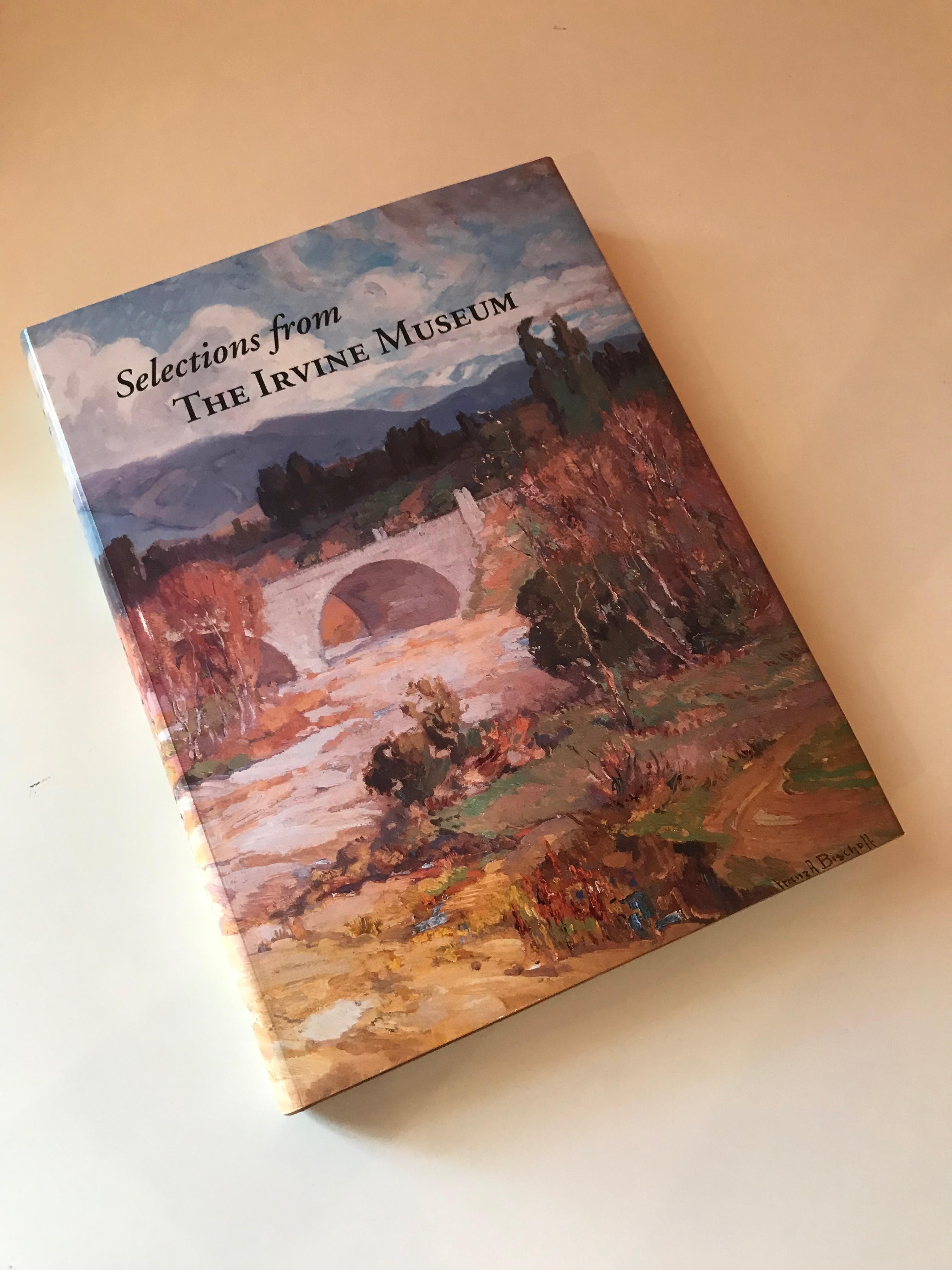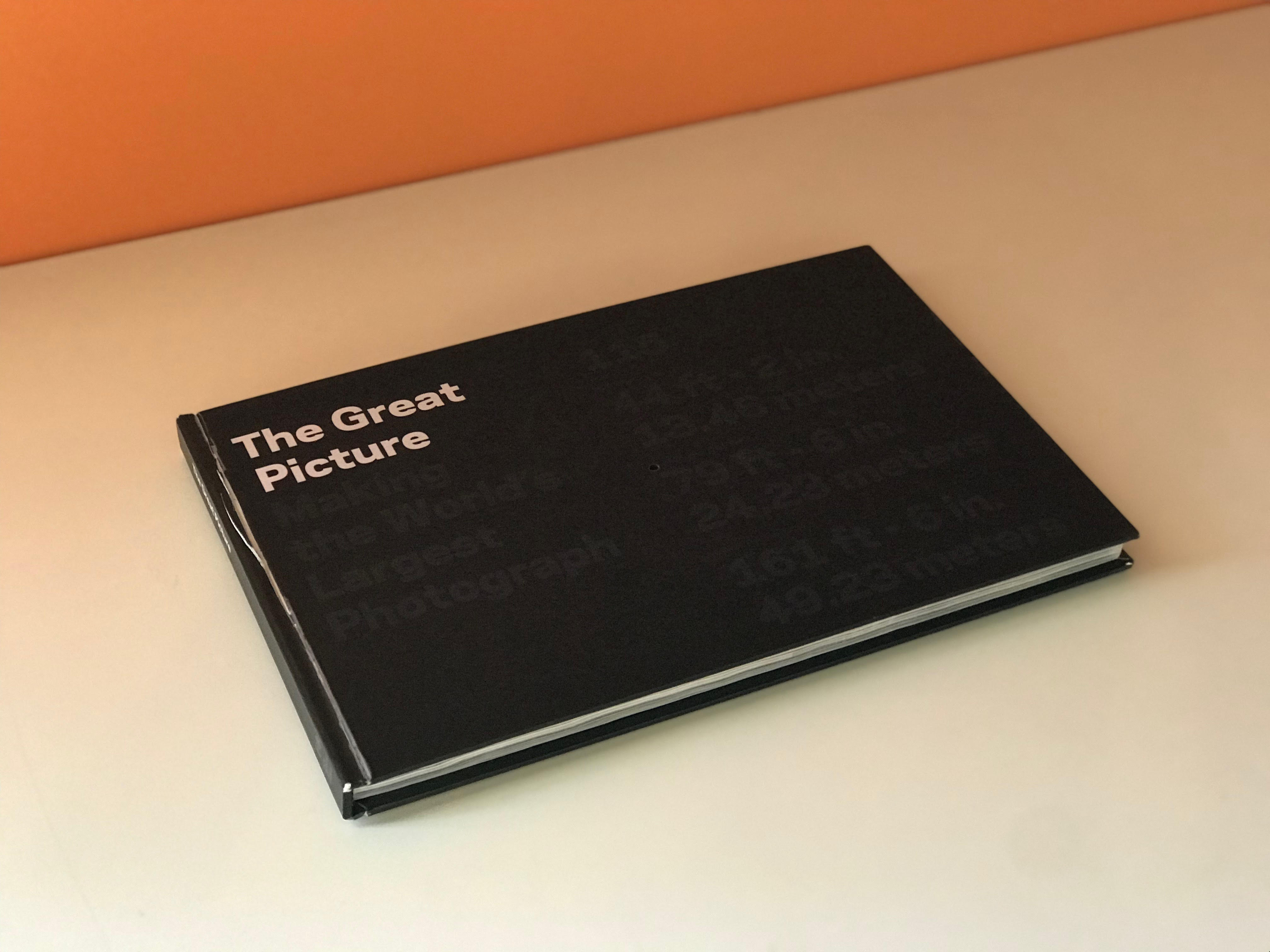An unassuming book collection leans on white shelves in the entrance of the Great Park Gallery in Irvine’s Palm Court Arts Complex. Casual as these books appear, they are ripe with the impressive history of the Orange County art scene. They document the art history of four O.C. institutions: The Laguna Art Museum, the Orange County Museum of Art, the Irvine Museum and, of course, the Palm Court Arts Complex. Altogether, they set an educational tone about the collaborations between artists and museums in order to substantiate O.C. as an illustrious beam of ingenuity. The fact that they are a free resource, rather than plastic-wrapped coffee table books, emphasizes the gallery’s mission to make art history accessible to any curious visitor. Though not every guest will have the time to thumb through the 50-plus catalogs of art, below is a preview of some of the most notable texts from each institution that is worth an in-person visit.

Photo by Sydney Walters
“UCI and the Development of Contemporary Art in Southern California, 1964-1971” is a publication by the Laguna Art Museum. It is a stunning overview of the artistic legacy paved by the University of California, Irvine. A comprehensive list of artists, including Marsha Red Adams, Chris Burden, James Turrell and Colleen McCallion, is woven into the index as part of the fabric of graduates, lecturers and teachers. In the beginning of the program’s graduate development, lack of resources and funding created a Darwinian effect. It challenged students to think freely, get creative and rely on resourcefulness in order to survive. The result is a lineage of scholarship so closely affiliated with the avant garde, it became the university’s modus operandi. Halfway through the book’s rundown of the myriad of UCI’s contributors, the text flips upside down and launches into a fresh section of student artwork, show cards and a timeline of key events from 1964-1971 that occurred in the art world, political world, popular culture and how UCI’s artistic development corresponds with these elements. It is a refreshingly insightful work about how movements of the greater Los Angeles area brush shoulders with Irvine.
The Orange County Museum of Art published the oldest book in the Great Park Gallery’s collection. A lime green “1997 Biennial” highlights the nine artists included in a show that was curated to highlight the absence of ego and an artist’s loyalty to material. The 1997 Biennial was a formative year for OCMA. The museum has undergone several changes in ownership and location. It was initially founded in 1962 as the Balboa Pavilion Gallery and then renamed in 1968 as the Newport Harbor Art Museum. Finally, in 1997, the newly renovated gallery opened its doors as the name it is known by today. This 40-page book is a companion to the inaugural show and transcribes the artist statements along with pictures of their work. Notably, most of the artists here are painters. Yet each artist challenges what it means to paint and work on two-dimensional, illusionary spaces. The collection has several more biennials available to browse, as well as books on specific artists featured at OCMA such as “Kuitca,” about the Argentinean artist Guillermo Kuitca, and “Joe Goode,” a retrospective text about the Los Angeles-based artist.

Photo by Sydney Walters
One of the Irvine Museum’s contributions is “Selections from the Irvine Museum.” It is a large book with a delicate pastoral scene on the cover which acts as the preface for glossy images inside paying homage to California’s majestic landscape. This book catalogs the history of California Impressionism or California plein air painting as artists capture outdoor elements specific to the region. Pages of tenderly observed eucalyptus branches, Monterey cypress and twisted Joshua Trees illustrate over 200 pages. For those unfamiliar with this museum in Orange County, the Irvine Museum is an organization committed to the preservation and education of California Impressionist art. With publications such as “Selections” featuring 75 painters, the museum draws attention to the landscape as a vehicle for observation and respect. For complementary texts on the exquisite nature of California, look out for “Palette of Light, Strokes of Joy: The Oil Painting of Tom Brown,” and “California Light: A Century of Landscapes.”

Photo by Sydney Walters
One of the most unique books worth studying is in reference to the Palm Court Art Complex itself. “The Great Picture” unveils a fascinating history of the center and unfolds a grand tale of artistic ambition. Before becoming a cultural campus, Palm Court was the El Toro Marine Corps Air Station, a World War II base. During the transition between naval base to community center after its decommissioning in 1999, Jerry Burchfield, Mark Chamberlain, Jacques Garnier, Rob Johnson, Douglas McCulloh and Clayton Spada founded the Legacy Project and set out to transform the unused space into an unparalleled experience. The group decided to use Hanger 244, a 10,000 square foot space, to create the world’s largest pinhole camera, thus making the world’s largest photograph. “The Great Picture” details the meticulous process of making the panoramic photograph that ended up being three stories high and 11 stories long. The Legacy Project is an additional commentary of technology in a digital age and the relationship between process and subject. Other Palm Court texts specific to the complex is “A Slice of Orange,” a photo book submitted by the members of the photographic society of Orange County, as well as several texts dedicated to the grander body of work of the members of the Legacy Project.
The Palm Court is a welcoming center, eager to inform visitors about what makes Southern California a unique hub of artistry. Their book collection is a broad chronicle of art that will inform any visitor about traditional and unconventional practices. On your next visit, pull up a chair at the entrance table to be inspired by free-form art from UCI, transformative material from OCMA, whimsical landscapes from the Irvine Museum and unparalleled ambition from the Palm Court Art Complex.
Advertising disclosure: We may receive compensation for some of the links in our stories. Thank you for supporting Irvine Weekly and our advertisers.

